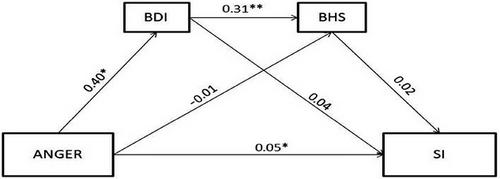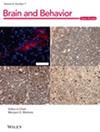Why Do Some Depressive Patients Have Suicidal Ideation but Others Not? Suicidal Ideation From the Perspective of Affective Neuroscience Personality Traits
Abstract
Introduction
Although major depression is the disorder most frequently associated with suicidal behavior, it is unclear that major depressive disorder patients may develop suicidal ideation. Basic affective system theory may provide a novel and beneficial viewpoint in this field. The goal of this study was to investigate the basic affective system in relation to suicidal ideation in individuals with depression.
Method
The study population comprised 160 participants who had been formally diagnosed with major depressive disorder. Participants were divided into two groups according to whether they had suicide ideation (depression with suicide [DS]) (N = 93) or not (depression with no suicidal ideation [DNS]) (N = 67). The Beck Depression Inventory (BDI), the Suicide Probability Scale (SPS), the Beck Hopelessness Scale (BHS), and the Affective Neuroscience Personality Scale (ANPS) were applied. Statistical Product and Service Solutions (SPSS) 24 and the SPSS macroprocess, which were specifically developed for assessing complex models including serial mediators, were used to analyze the data.
Results
The mean age of all participants was 31.1 ± 11 years, and most of them were female (65%). The DS group had a higher family history of psychiatric medication use and suicidal attempts. In addition, BDI, BHS, and SPS total scores were higher, as well as ANGER subscale scores were higher in the DS group. In mediation analysis, the ANGER subscale significantly predicted the presence of suicide ideation. We observed a direct effect of the ANGER subscale score on suicide ideation as well as an indirect effect of the ANGER subscale score on suicidal ideation via depression severity.
Conclusion
Higher scores on ANGER are associated with suicidal ideation. Neurobiological correlates, including the ANGER system, may be promising in understanding suicidal behaviors.


 求助内容:
求助内容: 应助结果提醒方式:
应助结果提醒方式:


